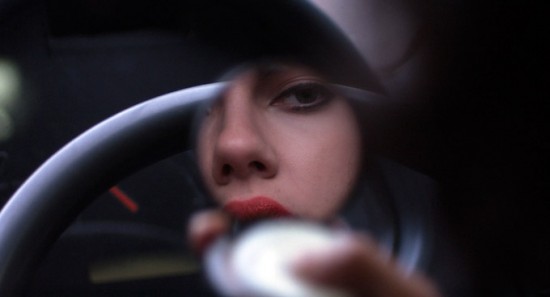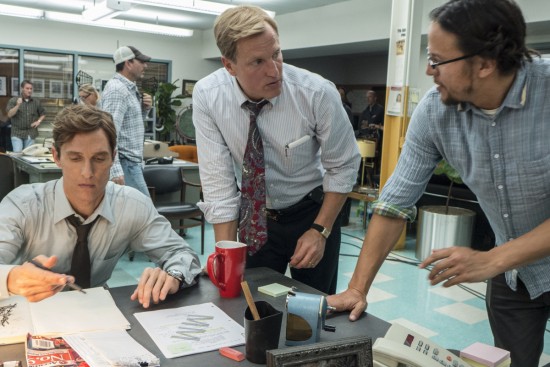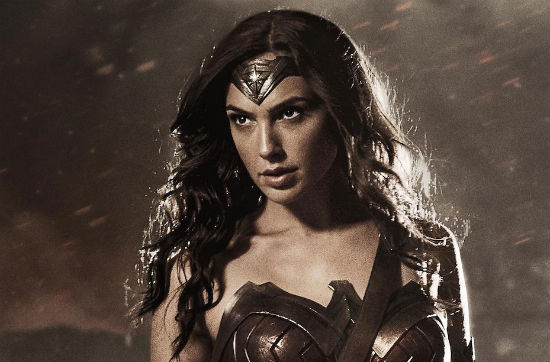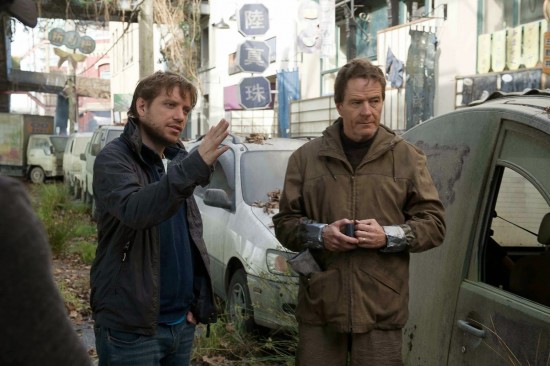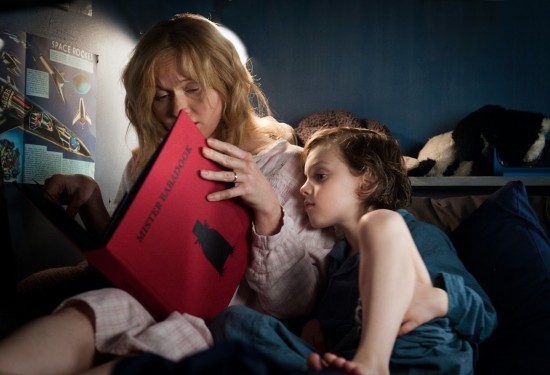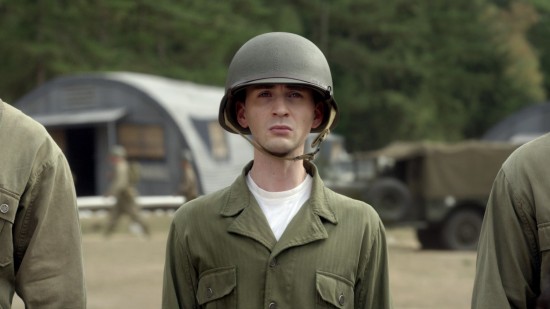10 Movie And TV Trends We Love
In our line of work, there are days when we get discouraged. Like the ones where yet another studio announces it's building a Marvel-style universe, or the ones where we spend three hours watching some $200 million movie only to realize it feels exactly like the last three $200 million movies we saw. It starts to feel like there's nothing new under the sun, and we might as well stop caring.
But we wouldn't be doing this if there weren't even more days that made us rejoice in the movie business, and made us excited to see where things are headed next. Not all trends are bad, even if we've complained about some of our least favorite ones in the past. After the jump, check out 10 movie and TV trends we love.
1. Hardcore Sci-Fi Is Making A Come Back
While we've never lacked for sci-fi tales on the big screen, we've recently noticed a welcome resurgence of hardcore sci-fi. That is, movies that are about a central sci-fi concept, rather than films that simply use sci-fi elements as window dressing. It's not that there's anything wrong with the latter — we loved Guardians of the Galaxy as much as the next geek-centric film blog — but it's films of the former persuasion that really remind us what sci-fi as a genre is capable of.
At its best, sci-fi opens up fresh ways of considering familiar themes. Sure, you could make a movie about our evolving relationship with technology without bringing a sentient A.I. voiced by Scarlett Johansson into it. But through Samantha, Her was able to extrapolate from our present and imagine our bittersweet future. Or look at Under the Skin, which shone a whole new light on the world we already know by showing it to us through the eyes of a literal alien.
It's not just indies, either. This year, Dawn of the Planet of the Apes forced us to consider man's place on the evolutionary path by bringing hyper-intelligent apes into the story, while Interstellar tested the power of love by sending it hurtling into a black hole. Hardcore sci-fi shows us the world as it is, but it doesn't stop there — it allows us to consider what it isn't, what it could have been, and what it might become.
2. Anthology TV Shows
The first season of American Horror Story was so bonkers, we couldn't even begin to guess how Ryan Murphy, Brad Falchuk and company could keep the story going into a second season. Turns out they didn't have to. Not long after the finale, FX announced the series would be back with an entirely new storyline, setting, and cast of characters next year. Since then, shows like True Detective and Fargo have followed suit.
The anthology model frees TV creators from the obligation to keep a storyline going after it's run out of steam, and cast and crew members from getting roped into years-long commitments. At the same time, it saves TV networks the trouble of having to market an entirely new show, and audiences the bother of trying out brand-new series. With American Horror Story, part of the fun is watching Murphy and Falchuk play mix-and-match with their favorite tropes and cast members. We know what to expect in terms of general tone and scope, but the specifics are a fun surprise at the start of each season. If the whole idea behind franchise-building is that audiences want more of the same, but different, anthology shows are looking like a great way to deliver just that.
3. Single-Director TV Series
For so long, TV was considered cinema's less accomplished little sister. Movies were a definite step up from TV, and only a filmmaker or actor down on their luck would deign to return to the small screen. Then the lines started to blur as directors like Martin Scorsese and David Fincher signing on to direct pilots. Then big-name directors started doing entire seasons of shows. In the past couple of years we've seen Jane Campion's Top of the Lake, Cary Fukunaga's True Detective, and Steven Soderbergh's The Knick, and in 2016 we have David Lynch's new season of Twin Peaks to look forward to.
The single-director model gives TV series a consistency and distinctiveness that's hard to achieve with the usual hired-gun approach. The directors are able to make the stamp on the show, rather than having to fit their style to match an established one. Instead of shrinking down big-screen style, single-director shows expand it by giving these directors more room to play.
4. Female Superheroes
Okay, we're getting a little bit ahead of ourselves in this one. None of the major comic book franchises running today — Fox's X-Men / Fantastic Four, Sony's Spider-Man, Warner Bros.' DC universe, or Disney's Marvel Cinematic Universe — has put out a single female-led superhero movie. If all goes according to plan, however, that should change within the next five years. Marvel Studios announced its first female superhero movie (Captain Marvel) for 2018, Warner Bros. / DC has Wonder Woman planned for 2017, Sony wants to put out a female-driven spinoff in 2017, and Fox is reportedly interested in a Mystique spinoff. (When you have someone like Jennifer Lawrence already locked in, you don't just not use her.) Oh, and as if all that weren't enough, we're also getting an Agent Carter TV series on ABC in January, and shows about Supergirl and Jessica Jones are in the works at CBS and Netflix, respectively.
Now granted, they could all turn out to be crap, and we could be back in the same place we were in 2005 after the dual misfires of Elektra and Catwoman. Call us optimistic, but we don't think that'll be the case this time. For one thing, the staggering successes of films like The Hunger Games, Frozen, Lucy, and Bridesmaids have more than proven that "general" (read: male) audiences will turn out for female-led films. For another, fans have been demanding movies about Captain Marvel and Wonder Woman for years, and Mystique has been a popular movie character for over a decade. As long as the studios put in the effort, those same fans will show up to review the results.
And if the female superhero trend leads to more female directors like Michelle MacLaren getting the chance to move on up, that's an added bonus. Maybe the 2018 version of this same list will include "female-directed superhero movies" as an item.
5. Studio Franchise Films By Indie Auteurs
To be honest, there were some mixed feelings about this one. On the one hand, it's tough to argue with good directors on promising projects. On the other, it's hard not to wonder whether the constrains of big-budget franchise-building could keep these directors from bolder work. Josh Trank's Chronicle didn't have the same obligations to the source material and future films that Trank's Fantastic Four does, and we don't know yet if Fantastic Four will suffer as a result.
But ultimately, we've come around to seeing the trend of indie auteurs helping big-budget projects as a net good. For one thing, it really is great to see the filmmakers we love rewarded for their excellent work. These are people who could use the exposure and prestige (not to mention the big paychecks) that come with these projects. For another, it's exciting to see what fresh perspectives they can bring to what might otherwise be cliched studio products. And we've we've seen some very good results so far. Gareth Edwards' Godzilla and James Gunn's Guardians of the Galaxy were among the two biggest treats of the summer movie season.
Plus, studio efforts can go a long way toward funding exactly the kind of passion projects we'd love to see more of from these directors. It's unlikely the director of Insomnia and Memento could have convinced a studio to shell out $160 million for an audacious original effort like Interstellar or Inception, if Christopher Nolan weren't also the director of Batman Begins, The Dark Knight, and The Dark Knight Rises. So bring on Rian Johnson's Star Wars Episode III, David Ayer's Suicide Squad, Colin Trevorrow's Jurassic Park, Ryan Coogler's Creed, and Duncan Jones' Warcraft. We can't wait to see what they do with those properties.
6. Film to TV Adaptations
This one is another mixed bag. No one really wanted NBC's Rosemary's Baby do-over, as evidenced by the dismal ratings, and Say Anything... fans breathed a sigh of relief when Cameron Crowe's strong objections to the planned TV sequel nixed the project altogether. But those are the bad examples. The best examples of the film-to-TV trend expand upon the source material in a way that's only possible when you have an entire season's worth of hours to fill.
The idea of turning a movie into a TV show isn't really new; M.A.S.H. and The Odd Couple did it decades ago. Recently, however, the trends has been picking up steam in a big way, and we've been treated to some truly great television as a result. NBC's Hannibal fleshed out a relationship we only saw bits of in the movies, and did it with such style that it feels like nothing else on TV or in the movies. And FX's Fargo brought back the spirit of the film, but allowed us to live those chilly Midwestern winters in a way we couldn't when we were only allowed a two-hour visit. We look forward to seeing what some TV magic can do for 12 Monkeys, Westworld, Minority Report, and more.
But with over 30 film to tv adaptations in development, this could eventually become an item on our Trends We Hate list.
7. Art Posters
Movie posters tend to follow one of a few set formulas. If you aren't convinced, just check out this damning gallery of movie poster trends. Or this piece on overcrowded posters. Or this recent post on Steven Seagal posters. It's especially disappointing when the movies they're selling are bold, original works. Why should their marketing campaigns make them look like every other movie out there?
But about ten years ago, the Alamo Drafthouse began to change that. The theater started putting out special posters for their Rolling Roadshow program, through their Mondo offshoot. Unlike the studio-approved ads, these are genuine works of art by genuine artists: stylish, striking, and unusual.
Mondo's limited edition illustrated posters took off to such a degree that studios started to take note. These days, it's not unusual for studios to approach Mondo for special-edition pieces to give out at IMAX screenings or other events. Or even to commission more artistic posters themselves, like the beautiful calligraphy-inspired teasers for The Wolverine. Yes, the regular posters are still out there, uglying up our freeways and subway cars. But we're grateful there's also an alternative.
8. Video On Demand
The best way to watch a movie is still in the theater. That's how they were designed to be seen, and something truly is lost when you take it out of that environment. All that said: Sometimes, it's just not gonna happen. You only have so much time, energy, and money to spend, and who could blame you for not risking large chunks of all three on a film that might turn out to suck anyway? Or maybe you are willing to invest all that, but the movie isn't playing anywhere within a 100-mile radius. Or you can't find a babysitter. Or you're scared of ugly-crying in public. Whatever the case, watching a movie at home on VOD is a much better alternative to not watching it at all.
And thanks to the changing models of film distribution, our options are better than ever. Increasingly, we're seeing movies open on VOD before or just weeks after they hit theaters, or sometimes hitting cinemas and VOD at the same time. As a bonus, a lot of the films released this way are little indies that might otherwise be overlooked by general audiences, or never even hit a theater outside of New York and Los Angeles. How many more people got to enjoy Bachelorette or Snowpiercer because they had the chance to watch it at their convenience, from the comfort of their own homes?
9. Return to Classic Horror
The successes of The Blair Witch Project and Paranormal Activity led to a glut of found-footage horror, for pretty obvious reasons — these films are cheap to make but can score big at the box office. But as the format saturated the market, we started to miss old-school horror filmmaking. You know, the kind of movies that don't purposely try to look bad, don't rely on jump scares, and don't leave us wondering why a character would keep filming when they're busy running from monsters.
Thankfully, filmmakers like James Wan, Ti West, and Jennifer Kent are here to bring high production values and good old-fashioned creepiness back to the genre. They're masters of tension and suspense, and their films look beautiful in an eerie, unsettling way. Maybe their films should feel like a throwback, but after years of purposely fuzzy pictures and nausea-inducing shaky-cam, they feel like a breath of fresh air.
10. Embrace of Niceness
Antiheroes and moral gray areas make for great storytelling. Just ask anyone who's seen Breaking Bad, Mad Men, Homeland, The Social Network, Christopher Nolan's Dark Knight trilogy... the list goes on. But so can nice people and straightforward goodness, and it's refreshing to see the pop culture pendulum come back around on that front. Two of this fall's best liked hits are The CW's The Flash and Jane the Virgin, which (as Alyssa Rosenberg has discussed in great detail at the Washington Post) are both about generally nice, kind people; NBC's Parks & Recreation has made an art of making fundamentally good people bounce off of each other.
Meanwhile, on the big screen, Captain America has become one of the most popular characters in the Marvel stable precisely because he's so straightforwardly heroic. Up until he came along, superhero movies tended to truck in ambivalence and angst (or at least arrogant charm a la Iron Man). There's little of that in Captain America. Where Nolan's Batman was "the hero Gotham deserves, but not the one it needs right now," Captain America is the hero we deserve and need. It's cathartic to watch this glowing paragon of American ideal face the country America has become — not with bitterness and judgment, but with love and hope.
Feedback: What Do You Think?
@slashfilm Shorter seasons. 10-13 episodes is ideal. Less filler.
— Mike Dowling (@mikejdowling) November 20, 2014
@slashfilm rebirth of funny women
— the little legend (@basamillion) November 20, 2014
@slashfilm complete stand alone stories in one season like True Detective & American Horror Story.
— Creighton (@sensiblemadman) November 20, 2014
@slashfilm Embracing science fiction.
— Chasin (@MichaelChasin) November 20, 2014
@slashfilm serialized storytelling. If you have great characters, it's nice to spend more time with them.
— Diego Crespo (@thediegocrespo) November 20, 2014
@slashfilm recent (probably limited) surge of uplifting and not depressing media
— Leo (@Leotheguy) November 20, 2014
Now it's your turn: What current movie and TV trends do you love?

